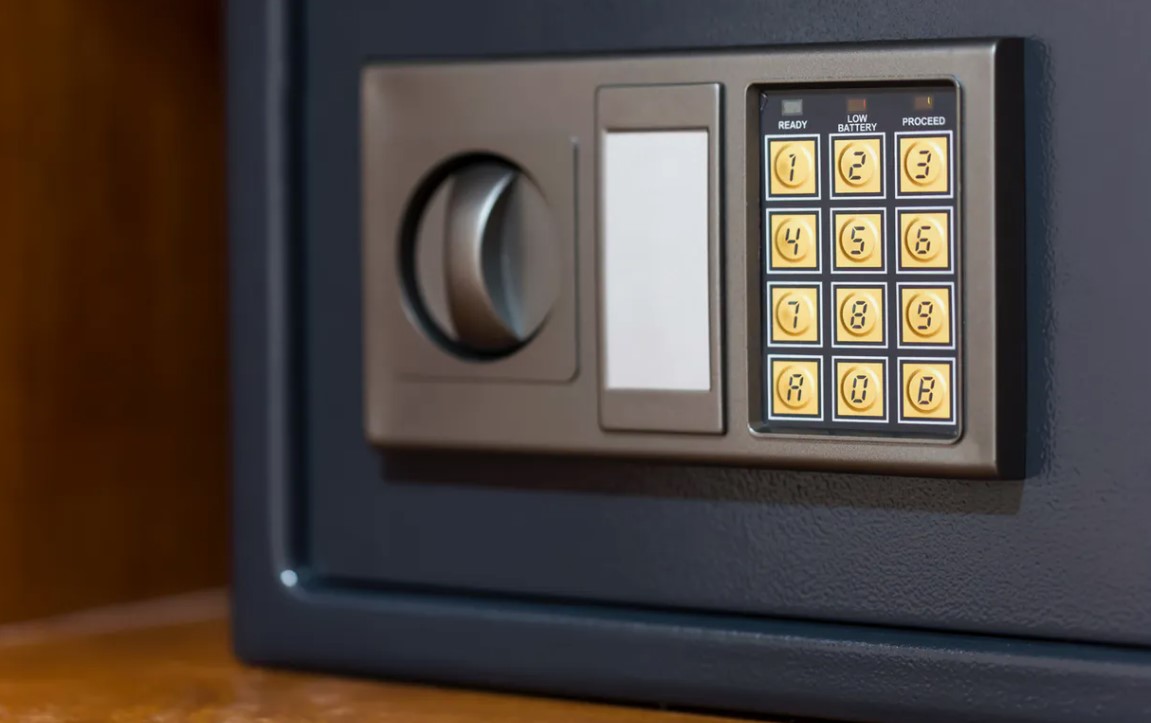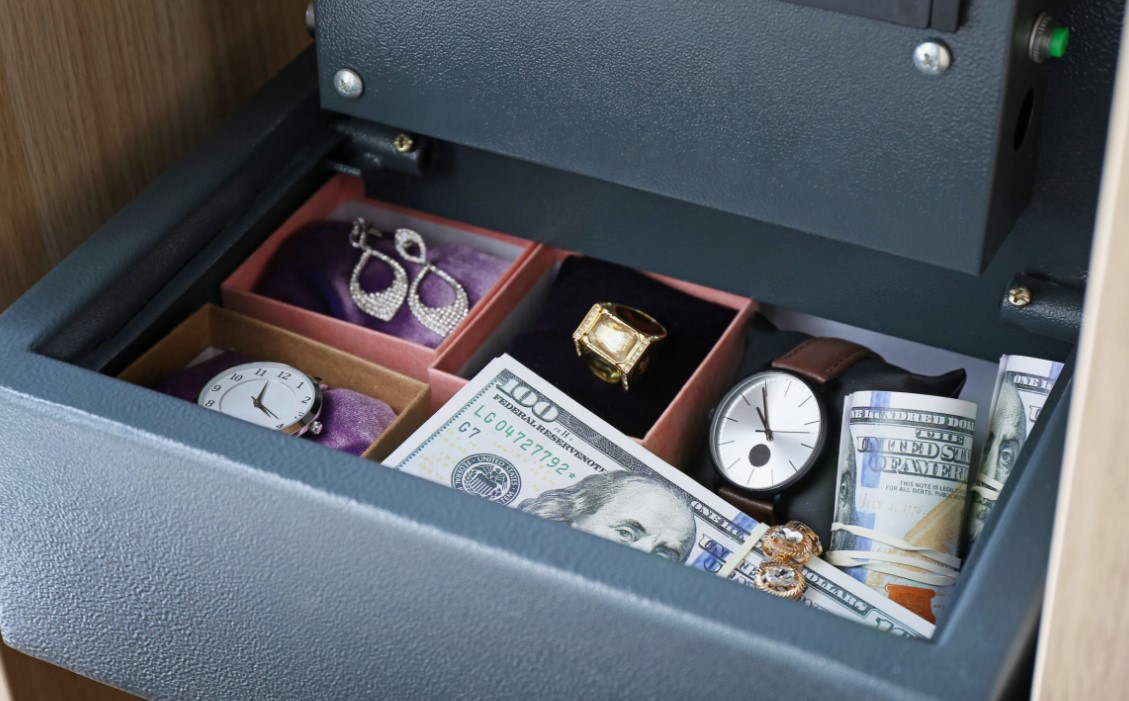The evolution of “safes Dubai” dates back to the mid-19th century in Great Britain, where the initial iterations were merely chests and drawers with tight locks. However, as criminals advanced in their methods, so did the technology behind safes. Today, modern safes Dubai share similarities with their ancient counterparts but have evolved to include advanced materials and mechanisms to enhance security. They remain crucial for safeguarding jewelry, important papers, and other valuables.
Key Features of Modern Safes
Modern safes can be categorized based on various features such as dimensions, volume, weight, type of locking device, class of protection, and anchoring methods.
- Dimensions: Both internal and external dimensions are specified. Internal dimensions determine the safe’s capacity, such as whether it can accommodate a gun or an A4-sized folder. External dimensions are critical for fitting the safe into the designated space.
- Volume: Measured in liters, making it easier to compare different safes. This allows users to gauge the storage capacity and choose one that meets their needs, whether for storing documents, cash, or larger items like jewelry collections.
- Weight: Generally, heavier safes offer greater burglar resistance. However, excessively heavy models for furniture installation can cause damage. All safes weighing up to 1 ton should have anchor holes for secure fastening. The weight also affects portability and the difficulty of moving the safe without authorization.
- Type of Locking Device: Locks are classified into key, code, and biometric, each offering different levels of convenience and security.
- Key Locks: Traditional and reliable, these locks require a physical key. They are straightforward but can be vulnerable if the key is lost or stolen.
- Combination Locks: These use a numerical code, offering a higher level of security since no physical key is required. They can be either mechanical or electronic.
- Biometric Locks: The latest in lock technology, these use fingerprints or other biometric data, ensuring that only authorized individuals can access the contents.
- Class of Protection and Stability: This indicates the safe’s resistance to fire and burglary. The mechanism includes the locking devices, number, and thickness of crossbars. Safes are subjected to rigorous testing to determine their protection class.
- Fire Resistance: The ability of the safe to withstand high temperatures and protect contents from fire damage.
- Burglary Resistance: The safe’s ability to withstand tampering, drilling, and other forms of forced entry.
- Anchor: Essential for installing safe cabinets securely, ensuring there are anchor holes for attachment to a concrete base. Anchoring prevents the safe from being easily removed and transported by thieves.

Main Types of Safes
Safes are categorized into three primary types, each serving distinct purposes:
Burglar-Resistant Safes
The primary function of burglar-resistant safes is to prevent unauthorized access to their contents. The walls are typically made from metal plates ranging from 1-3 mm thick. Some manufacturers, particularly in the United States, produce safes with steel plates up to 200 mm thick. High-strength concrete, often reinforced and mixed with granite or marble chips to reduce weight, is poured between the metal sheets.
Key features include:
- High-Quality Locking Mechanisms: These safes can be equipped with key locks, combination locks, or electronic locks.
- Construction: The thickness of metal plates and concrete reinforcement ensures durability and resistance to tampering.
- Protection Levels: Various protection levels are available, often determined by the thickness of the materials and the quality of the locking mechanism. Higher levels offer increased security but at a higher cost.
Fire-Resistant Safes
Fire-resistant safes are designed to protect contents from high temperatures rather than preventing theft. They are classified into three fire resistance classes based on their ability to maintain internal temperatures below certain thresholds:
- Type B: Protects paper valuables, keeping the internal temperature below 170°C. This is essential for documents that could easily ignite at lower temperatures.
- Type D: Protects film and disk media, maintaining internal temperatures up to 70°C. This is crucial for photographic and digital media that are sensitive to heat.
- DIS Products: Suitable for magnetized media, with a temperature limit of 50°C. These are used for storing computer disks, magnetic tapes, and other data storage devices.
These safes achieve high fire resistance through the use of foam concrete poured between 1-1.5 mm steel walls, which is lightweight and has low thermal conductivity. Additional insulation layers may be included to enhance fire protection.

Fire-Resistant Burglar-Resistant Safes
These are the most reliable safes, offering protection against both fire and burglary. They feature:
- Thick Body Plates: The body plates can be 6-8 mm thick, with fire-resistant concrete poured in between. This dual-layer construction provides robust defense against both heat and physical attacks.
- Multi-Layer Doors: The doors are constructed from several metal layers for enhanced security. Multiple layers make it significantly more challenging to breach the safe.
- Dual Locking Mechanisms: Often equipped with two types of locks to ensure maximum security. For example, a combination of a biometric lock and a mechanical lock can provide a fail-safe in case one mechanism is compromised.
Specialized Types of Safes
Beyond the primary categories, there are specialized safes designed for specific purposes:
Gun Safes
These are designed specifically for storing firearms and ammunition. They are often required by law to prevent unauthorized access, especially in households with children. Features include:
- Adjustable Shelving: To accommodate different firearm sizes and accessories.
- Fire and Burglary Protection: Combining elements to protect against both fire and unauthorized access.
- Tamper Alerts: Some advanced models include electronic monitoring and alerts in case of tampering.
Jewelry Safes
Jewelry safes are tailored to protect valuable jewelry collections. They often include:
- Customizable Interiors: With drawers, compartments, and velvet-lined sections to organize and protect jewelry.
- Enhanced Security: Features such as biometric locks and tamper-proof construction.
- Discreet Design: Many are designed to blend seamlessly into home décor.
Data Safes
Data safes are intended to protect digital media and electronic data storage devices. They are essential for businesses and individuals with critical data. Features include:
- Temperature Control: Ensuring that internal temperatures do not exceed safe limits for digital media.
- Moisture Control: Protecting against humidity and condensation, which can damage electronic data.
- Fire and Water Resistance: Comprehensive protection against various environmental threats.
Choosing the Right Safe
When selecting a safe, consider the following factors:
- Purpose: Determine what you need to protect (e.g., documents, jewelry, firearms) and choose a safe designed for that purpose.
- Location: Decide where the safe will be installed (e.g., home, office, hidden in furniture) and ensure it fits the space.
- Security Needs: Assess the level of security required based on the value of the contents and potential threats.
- Budget: Safes vary widely in price, so choose one that offers the necessary protection within your budget.
- Certification: Look for safes that have been tested and certified by reputable organizations to ensure they meet industry standards.
Conclusion
The evolution of safes from simple chests and drawers to sophisticated security devices highlights the importance of protecting valuable assets. Understanding the different types of safes and their features is crucial for selecting the right one to meet specific security needs. Whether the priority is to guard against theft, fire, or both, there is a modern safe designed to offer the necessary protection. Investing in a high-quality safe provides peace of mind, knowing that your valuables are secure from various threats.

Cyclist, father of 2, fender owner, International Swiss style practitioner and HTML & CSS lover. Working at the intersection of beauty and mathematics to create not just a logo, but a feeling. Check me out on Dribbble or Medium.
